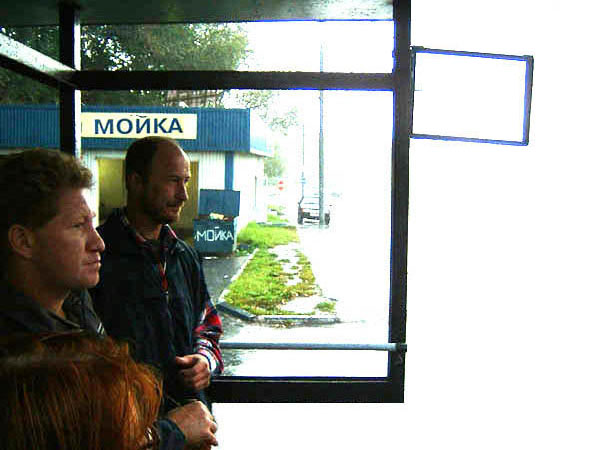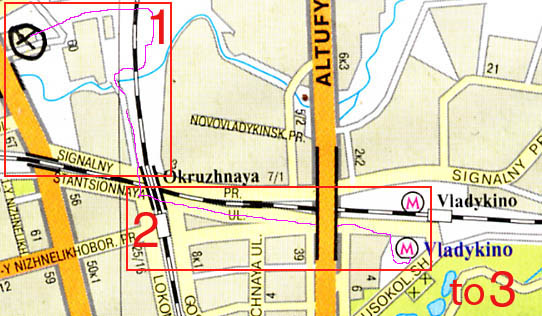
Telling
stories with space.
"hidden natures" : location based narrative.
pedro soler 2004.
intro
"Dani Maeda on the Run" & "Alone" & "Passenger" (see http://root.ps/heretico/) all used space as a way of telling stories. Maps (more or less abstracted) became the interface to an audiovisual interactive experience. "Alone" & ".. on the run" both start out from very simple narrative bases, almost inconsequential, while "Passenger" is more complex - permitting a choice of narratives. The key exploration here is the way that space becomes the story. The desire for the space & its relations to speak. The minimal metaphor for the user as a flaneur, a walker. All the works yearn for the land - they are about space, made with space, communicating space.
In the 1998 presentation of Alone i talked about it being a demo for an augmented reality experience. I already wanted to get out of the computer. Then it was very complicated, now it is a bit less complicated. GPS coordinates in place of screen coordinates, the map becomes the territory. Back to the real world.
You walk through an outdoor space with headphones on. Texts read by actors are the voices of the characters you hear as you walk. An arrow on the screen of your pocket computer (PDA) indicates the narrative direction. Thats all. There is the absolute minimum of abstraction from the environment - light headphones permit hearing environmental sounds. Your interaction is walking. The screen of the portable computer is used only as a narrative compass & to make certain choices in the narrative (see below).
The result is halfway between a theatre play and a novel, with something of experimental audio, a narrative that you make.
software
The software will run on a PDA - a pocket computer - equipped with GPS (eg. Compaq iPaq with Emtac GPS)
In its most simple way of working the software receives the GPS* coordinates in realtime from the GPS device and then matches the coordinates with the database of audio files. If the user is within a certain distance from the "narrative point" a sound is played. An arrow on the screen points to the next narrative point (future).
There are 2 levels of sound - the first ('ambient') may be accessed simply by being in the appropriate area but the 2nd level ('narrative') have a strict order which means that the user must have passed through all previous narrative points in order to access the current one. They may then return to access those points again in any order they wish (memory) but the future remains accessible only by a defined route (time).
The reason for this is to give the piece a direction and a dramatic tension. Often interactive work is lacking in this tension, the sense of time, which results in loose & often overly abstract narratives.
Sounds may overlap so the software can play & mix 2 audio files at the same time. The volume of the sound is determined by the distance from its epicentre. Each sound therefore has a GPS coordinate, an order number (if narrative) and a diameter.
Some points can be of change between narratives. In this case a specific sound is heard and a menu on the pda screen enables your choice between characters. For example, when Abdel sees the family & is startled. At the point where the family are you have the choice to enter into the family narrative or continue with Abdel's narrative. You enter at the point where you are in abdel's narrative and carry on from there. However, you may of course go back in time ...
The software must be written specially for the project. Tools do exist but they are artist softwares and not shared. For example, Steve Symonds has made a PDA/GPS sound tool called "Aura" http://muio.org/projects/aura.html
It would be great to be able to fund the development of a linux handheld distribution via this project. However, prototyping at least will probably be written in Flash to run on Windows CE. Code in either case will be kept open.
Whichever platform is used the software has 2 parts : an editor for assigning sounds & their characteristics to points and a runtime for the use on the PDA.
story
My first work with this equipment is located in the north of Moscow, Russia. The story is very loosely a sequel to Alone (see above) : Abdel has sold the passports that Abd el Khabir entrusted to him. Tired of a life of petty crime he has decided to escape from barcelona, taking with him the money he has made from the sale. He knows he risks death at the hands of al kabir for his treacher but he will go far away - to the north. a childhood friend, a bit older than him, is established in moscow after having done his university studies there. he's married and isnt part of the circle of el kabir and the mediterranean. Salim will vouch for him for the visa, he could stay a while there while he organises his things and find work. But once in Moscow, Abdel soon finds out that Salim's business connections are not exactly what he expected...

The map shows 1. a zone of nature alongside the railway tracks 2. a road running alongside housing blocks & the circular Vladykino metro station, from where the metro would take you to 3. the Leninski railway station in moscow.
Zone 1 is an extraordinary place, climbing over the railway embankment gives the sense of entering another world. Dramatically it is very powerful. The first layer of narrative narates how abdel is having to go and pick up something from a garage where stolen cars are repainted. here is a first outline sketch of his walk through the area : http://root.ps/heretico/projects/hidden_natures/index.html.
However other people that he meets in the space are also points of entry for us into parallel narratives - the child of the first family, the sleeping drunken woman in the second family, the man searching beside the river, the man in the forklift being pushed. In this way one will "derive" in time and space. The area becomes like the zone in "Stalker", where the space folds and reorganises itself. A theatre of the imagination.
The transition between the 1st & 2nd spaces occurs in the transfer of narratives between abdel and yuri who is one of the men watching the entrance. This is not a freely chosen change of narrative, it is forced. There is a decision by the walker to leave zone 1. Zone 2 is a reflection on love, sex and pablo escobar. Yuri & Natacha in love, walking to the metro, almost having sex in some bushes in front of appartments - flashbacks on their life and loves, yuri's conflicts with his desire for natasha and his criminal life, natasha's need for true partnership and liberty also. Zone 3. The chaotic microworld of the busy station - we meet abdel, yuri & natacha (are they really going to Irkutsk ?) here as well as a diverse world of pickpockets, policemen and dealers. Its the place where the stories are drawn together and we arrive at some kind of denouement perhaps.
locative media
The use of the map as a way of organising information, the cross pollination with ideas of psychogeography & the derive, cheap mobile technology, as well as a growing consciousness of public & media space have all contributed to the birth of "locative media".
The attraction of being able to annotate shared space is evident. GPSter's project "songlines" carried out in utrecht http://www.impaktonline.nl/box/songlines puts this into practise but there is no narrative drive, it is "a world of virtual graffiti". It is locative media at its most obvious yet revolutionary.
34 North 118 West http://34n118w.net/ is an early work of locative media that blends historical knowledge with narrative. One of the few such projects to my knowledge. Pallit Thayer argues for "abstract narratives" ( http://pallit.lhi.is/~palli/NarAbsLoc.pdf) while 2 groups who have worked with the performative aspect of locative media are Blast Theory http://blasttheory.co.uk/ & ambienttv, with their project myriorama, http://www.ambienttv.net/4/myriorama/ .
But for my self I seek something more intimate, lightweight, the idling pleasure of a walk and a novel. In this sense Christina Kubisch's work is very suggestive with her electromagnetic headphones that enable you to hear the audio textures of the land. Trained as a composer, she has been working with sound and space for the last 40 years.
spatial narrative antecedents
The presence of Barcelona in the novels of Andreu Martin, the motorways of nothern europe in Maurice Dantec, Pablo Escobar's Medellin, Buenos Aires in Juan Damonte's "Ciao Papa", - a brilliant mafia novel with a doomed young hero - theatres for lives lived on the edge.
James Joyce would ask friends in Dublin to send him maps of the city while working on "Ulysses". His earlier novel "Portrait of the Artist as a Young Man" also uses the space of Dublin to organise the narrative. Dublin his theatre of the mind. See http://www.robotwisdom.com/jaj/jajdublin.html for the plotting of his stories on maps.
The narrative of "The Castle" by Franz Kafka is created by the impossibility of arriving at the castle, the space of the village becomes a kind of shifting " zone" like that of Tarkovsky's film "Stalker", where the space speaks, lives, turns around on itself. The authors unique visions render otherwise quiet country landscapes into dreamlike mysteries and sudden dangers. The journey of men in search of something they cannot know or name.
And the oldest of all, the aboriginal australians, stories and songs born from thousands of years of wandering back and forth across the land. The songs actually describe the land, imbuing it with sense, the spirit of the ancestors. The songs tell the way and the way is the narrative and the land is a song.
//
info at heretico dot net
28.10.04
/
* other positioning
systems could be used e.g Place Lab,
http://www.placelab.org
)